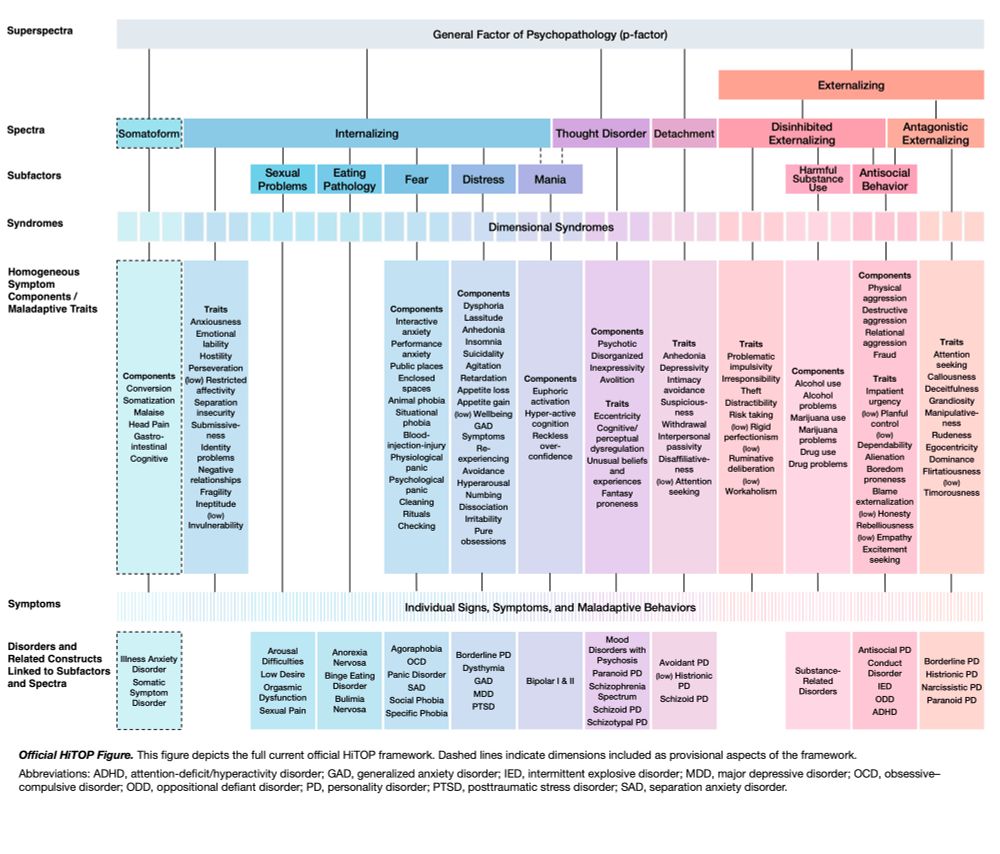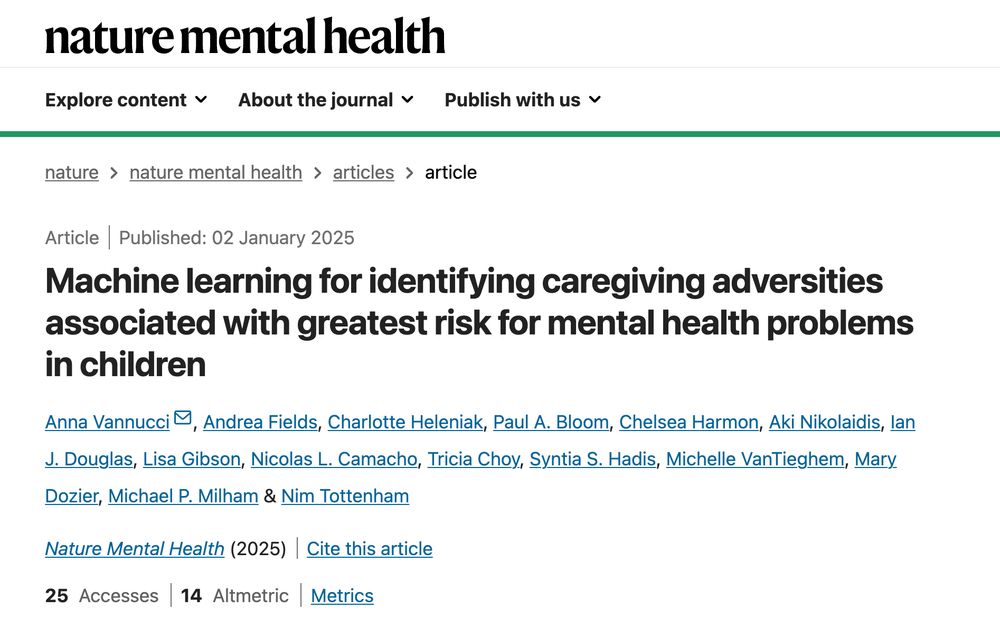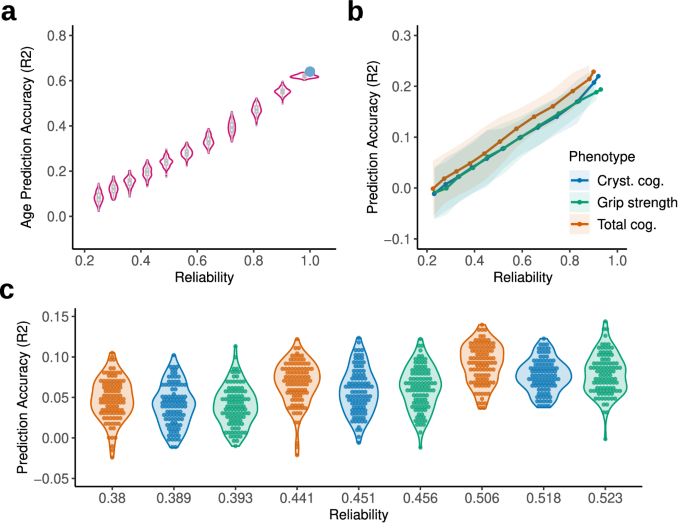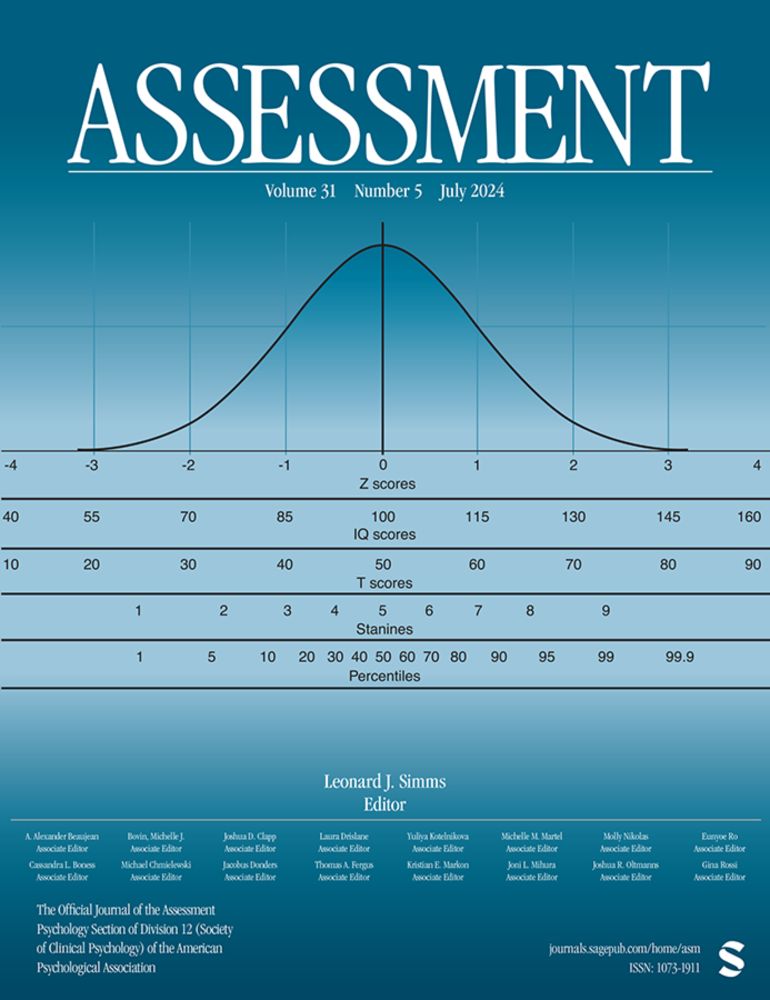I’ve spent the last 8 years(!) working from the position that HiTOP relies too much on analyses of traditional diagnoses, baking in limitations of the DSM, and that we need to move to symptom-level analyses to fix it
It turns out that rebuilding HiTOP from the ground up doesn’t change much 💀
1/
04.11.2025 20:26 — 👍 76 🔁 22 💬 3 📌 3
Thanks Corinne! 😄
11.09.2025 18:11 — 👍 0 🔁 0 💬 0 📌 0
Absolutely honored to be part of this brilliant cohort! Looking forward to growing in new & exciting ways this year thru the amazing clinical opportunities Pitt/WPH has to offer ☺️🧠
If you, or anyone you know, would like to chat about internship & applications (at Pitt or elsewhere), plz DM me! ✉️
11.09.2025 10:47 — 👍 6 🔁 0 💬 2 📌 0

Spread the word!! DANS 2025 registration is opening very soon…take a look at some of our amazing speakers! You can present a poster you will present or have presented elsewhere…the goal is to foster discussion. Check dans.pitt.edu for updates!
21.08.2025 19:02 — 👍 4 🔁 5 💬 0 📌 1
Precision Psychopathology + Dynamic Immunopsychiatry Lab – University of Pennsylvania, Department of Psychology
I will be interviewing for a clinical psychology PhD student in the Precision Psychopathology + Dynamic Immunopsychiatry Lab this interview cycle.
Please see our website for more info about what we do + share with applicants you think might be a good fit.
share.google/uJRyS3NY9Kdo...
07.08.2025 11:23 — 👍 69 🔁 50 💬 0 📌 1
New preprint! 🚨
osf.io/preprints/ps...
Traditional categorial frameworks, like the DSM and the ICD, have several key limitations, including heterogeneity within diagnoses, comorbidity issues, arbitrary categorical boundaries, and limited clinical application and utility.
1/
30.01.2025 13:20 — 👍 39 🔁 15 💬 1 📌 3
Announcing.....a new edition of Uncensored Advice for getting into grad school! Now with some info on emerging opps for a masters in psychology! Check it out for FREE: mitch.web.unc.edu/wp-content/u....
#psychology
#PsychSky
#mentalhealth
#PsychSciSky
#ClinPsych
22.01.2025 19:21 — 👍 42 🔁 27 💬 0 📌 1

The current official HiTOP model - a hierarchy of dimensional psychopathology constructs ranging in breadth from superspectra at the top down to individual signs, symptoms, and maladaptive behaviours at the bottom (as well as a list of disorders and related constructs that are linked to the subfactors and spectra)
Can you help me build a list of things that are (or might be) wrong in the current HiTOP model while I'm sick and recovering on the couch? Some of my top hunches are:
-My PhD was wrong (☹️) and low sexual function shouldn’t be neatly nested under internalizing
1/2
08.01.2025 01:51 — 👍 65 🔁 21 💬 25 📌 2

New paper out in #nature #mentalhealth from my work applying machine learning to identify which early adversities are most important for predicting mental health risk in children - results might surprise you!
www.nature.com/articles/s44...
05.01.2025 20:01 — 👍 27 🔁 10 💬 3 📌 1
P.S. you can "target" loadings to whatever value you want - I'm fairly certain it doesn't only have to be 0, at least in Mplus. Some packages in R may only allow targeting to 0.
26.09.2024 11:25 — 👍 0 🔁 0 💬 1 📌 0
These "targeted loadings" would then be biased towards 0 without being fixed. You can allow some loadings to be freely estimated. And this should work beyond just a measurement model! Mplus is probably your best bet here (that I know of). Hope this helps!
26.09.2024 11:23 — 👍 0 🔁 0 💬 0 📌 0
Hi David! Another option that seems accessible is Exploratory Structural Equation Modeling (ESEM) with a Target Rotation. Typically, in this approach, one would specify "targeted" loadings that are expected to be close to 0.
26.09.2024 11:23 — 👍 0 🔁 0 💬 2 📌 0
New pre-print that has been a long time coming! A pre-registered replication + extension of our past work on hierarchical inflammatory phenotypes of depression, with, imo, much stronger assessments of both inflammation and depression symptoms 1/X
osf.io/preprints/ps...
23.04.2024 23:58 — 👍 6 🔁 5 💬 1 📌 1
Please apply and share with prospective grad students interested in learning more about Duke's Psych & Neuro department!
✨️Application deadline is August 11th ✨️
31.07.2024 16:25 — 👍 0 🔁 0 💬 0 📌 0
We hope this work will elevate the study of the role of altered neural reward processing in the experience and expression of early childhood depressive symptoms and highlight the importance of improving our developmental understanding of depressive disorders 🧠
25.07.2024 23:35 — 👍 0 🔁 0 💬 0 📌 0
Further, we extend this work by providing longitudinal data suggestive of a specific association between right caudate reward reactivity and future elevations in depressive symptom severity in children.
25.07.2024 23:35 — 👍 0 🔁 0 💬 0 📌 0
These findings conceptually replicate prior findings in the left amygdala and provide further evidence of links between depressive symptoms and caudate and mPFC reward reactivity, particularly in early childhood.
25.07.2024 23:35 — 👍 0 🔁 0 💬 0 📌 0

However, only right caudate reactivity to reward outcomes at baseline (negatively) associated with child depressive symptom severity one year later.
25.07.2024 23:35 — 👍 0 🔁 0 💬 0 📌 0
We found that left amygdala reactivity to salient outcomes (i.e., reward & loss vs. neutral) and right caudate and right mPFC reactivity to reward outcomes (i.e., reward vs. neutral) negatively associated with concurrent child depressive symptom severity.
25.07.2024 23:34 — 👍 0 🔁 0 💬 0 📌 0

During an fMRI scan, children played a simple guessing task intended to elicit responses to rewards and losses relative to a neutral condition. Caregivers reported on their own and their children's depressive symptom severity at baseline and one year later.
25.07.2024 23:34 — 👍 0 🔁 0 💬 0 📌 0
🚨NEW PREPRINT🚨
Mike and I conducted a conceptual replication and extension of prior work linking neural reward-related reactivity in specific brain regions-of-interest to concurrent and later depressive symptom severity in young children.
25.07.2024 23:34 — 👍 1 🔁 0 💬 6 📌 0

It is a FREE, in-person opportunity for prospective PhD students to learn more about Duke through seminars, workshops, and conversations with graduate students and faculty. Please complete the following application by the August 11, 2024 deadline and direct all questions to pnarc@duke.edu
09.07.2024 23:26 — 👍 0 🔁 0 💬 0 📌 0

Duke Psychology & Neuroscience’s Future Blue Devil Days 2024 aims to give individuals who want to learn more about the department’s commitment to diversity, equity, and inclusion, both in culture and research, a first look at graduate student life at Duke University.
09.07.2024 23:25 — 👍 0 🔁 0 💬 1 📌 1
You can access the full accepted manuscript here: doi.org/10.31234/osf...
05.07.2024 18:47 — 👍 0 🔁 0 💬 0 📌 0
We are currently working on follow-up studies on the factor structure of the PFC-S to improve a multidimensional understanding of early emerging depressive symptoms and advance the identification of neurobiological and environmental correlates
05.07.2024 18:45 — 👍 0 🔁 0 💬 0 📌 0
I know the feeling 🥲 experienced similar challenges when trying to decide between glmmTMB and glmmPQL. Not unlike trying to identify influential cases on a set of multiply imputed datasets!
13.06.2024 20:49 — 👍 1 🔁 0 💬 0 📌 0
Assistant Professor at PittPsychiatry|Clinical psychologist|Studying suicide, protective factors, reinforcement learning, EEG/ERP🧠. She/her.
Assistant Professor at Pitt Psychiatry | Clinical Psychologist | Eating behavior, food insecurity, health equity & perinatal wellbeing | Mom 👦🏼👶🏻🐕
Assoc Prof at U Pitt Dept of Psychiatry. Suicide researcher. Mom to a small human and two cats. Views/opinions expressed are entirely my own.
Pitt Psychiatry provides superb behavioral health services, innovative research & outstanding training. Named a US News & World Report Best Psychiatry Program | psychiatry.pitt.edu
Writer, recovering scientist. Debut novel forthcoming from She Writes Press, February 2027. Stories @xraylitmag.bsky.social, @pipelineartists.bsky.social, @molotovlitzine.bsky.social, @maudlinhouse.bsky.social. Find me at lizfyne.com
Professor in Psychology at Trinity College Dublin. Here for less gross twitter, less boring mastodon. www.gillanlab.com
Assistant Professor in Clinical Psychology at Boston University. Views my own.
Ph.D. in Clinical/Quantitative Psychology from Vanderbilt University. University of Notre Dame/University of Washington Alum.
https://sites.google.com/bu.edu/qpl/home
Assistant Professor at University of Minnesota | Studying the processes underlying personality & psychopathology in everyday life
Lab website: ringwaldlab.psych.umn.edu
He/him. Something something Self control and quant methods. Professor of Psychology at University of Washington. All opinions are my own and correct. Co-host of https://thatimplementationsciencepodcast.podbean.com/
https://faculty.washington.edu/kingkm
CRISP is an interdisciplinary consortium of Brown University faculty, trainees, and community partners with a mission to advance knowledge and to reduce the incidence of suicide and suicidal thoughts and behaviors through research, education, and advocacy
Clinical-Health Psych PhD Student | U of M ➡️ Pitt Interests: Binge eating attitudes/behaviors & ultra-processed food intake during the perinatal period
Perinatal Health and Behaviors Lab
University of Pittsburgh
www.phab.pitt.edu
Research Scientist and Postdoctoral Fellow at Seattle Children’s Research Institute / University of Washington. Chronic pain, social determinants of health, early life adversity, and digital behavioral interventions. 🌻
Assistant Prof @ Teachers College, Columbia University.
Director of the Stroller Lab - http://strollerlab.tc.columbia.edu
Personal website - http://www.sonyatrollerrenfree.com
Associate Professor of Quantitative Psychology at Florida International University (FIU).
Web: timhayesquant.com
The EAT Lab is dedicated to research on and treatment for eating disorders and anxiety. We are directed by Dr. Cheri A. Levinson, Ph.D. at the University of Louisville
phd student at duke with moffitt/caspi + laboratory of neurogenetics using predictive modeling to understand brain aging
Laboratory for Affective & Translational Neuroscience, University of Maryland | shackmanlab.org | affective neuroscience | "pessimism of the intellect, optimism of the will.”
Postdoctoral Fellow at Stanford Center on Early Childhood









